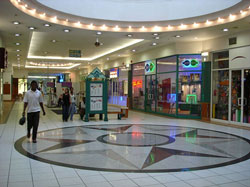Marketing & Media trends
Industry trends
BizTrends Sponsors
Subscribe & Follow
Trending




 Umgeni: A river of sewage flowing through DurbanNokulunga Majola
Umgeni: A river of sewage flowing through DurbanNokulunga Majola
No sustainable recovery in retail yet

These recent 3-month average growth rates appear to be a more realistic reflection of current economic times, given that the economy contracted in the 1st quarter, and possibly contracted again in the 2nd quarter, which does not bode well for employment and disposable income growth.
Therefore, we are of the opinion that the broad real retail sales growth trend has been one of slowing until recently, and that 2014 as a whole will see this growth rate averaging between 1.5% and 2%, with our real economic growth forecast at a mediocre 1.5%.
Growth hampered by retail price inflation, weak rand
In addition to economic growth weakness, real retail sales growth is hampered by accelerating retail price inflation, with some weak rand impact possibly feeding through into these prices.
The Retail Sector's "price competitiveness" relative to other consumer areas has been a contributing factor to relatively strong real retail sales growth in recent years. By this, we refer to a lower retail price inflation rate compared to South Africa's overall consumer price inflation rate.
However, such price competitiveness may be diminishing as retail price inflation steadily heads towards the 6% rate, reaching 5.6% year-on-year by May. This is noticeably up from 3.3% just 5 months prior as at December 2013.
The Retail Price Inflation surge has been broad based, with all major sales categories' inflation rates rising. However, food price inflation appears to be having the biggest impact, with Specialised Food retailers showing the highest price inflation rate of 7.2% year-on-year in May, with General Dealers 2nd on 6.6%.
Given the influence of global food prices in domestic agriculture markets, it is plausible to believe that the rand weakness has played some role.
The fact that the rise in inflation is so broad-based at a time when demand is far from strong and supply surely not overly constrained, seems to also point to some direct or indirect impact from rand weakness.
Food retail growth remains slow
Food consumption is typically less cyclical than, say, durable and semi-durable consumer goods. However, food price surges do often constrain growth in real food spending and thus food-related retail, especially on the specialized food retail side.

It is thus not surprising, given their higher than average retail inflation rates, to see specialised food retailers experiencing only mild real growth of 1.6% year-on-year growth for the 3-months to May in sales, while General Dealers also saw slow growth of 1% for the same period.
Home maintenance levels slowed
Strong home maintenance levels were not so long ago a key source of strength, but this has also slowed. Our FNB Estate Agent Surveys have pointed to a return to full levels of maintenance in recent years by many households, as well as some growth in home upgrades. This appears to have driven very strong growth in sales by the "Hardware, Glass, and Paint Products" sector until not long ago. However, this category's growth has slowed sharply to 1% for the 3 months to May from double-digit territory early in 2014. This may point to the recovery in home maintenance levels having more or less run its course, and with some of this category of sales being credit driven, the January interest rate hike may have had some cooling impact on its growth.
The one key driver of retail sales growth in recent years has been in the area of "Clothing, Textiles, and Footwear" retail. While this category's growth remains above the overall retail sales growth rate, its 4.4% year-on-year growth for the 3 months to March also represents a significant slowing.
Conclusion
In short, therefore, we do not read too much into the monthly real retail sales growth acceleration to 2.4% year-on-year. Monthly data can be volatile, and we thus pay more attention to the 3-month moving average of 1.8%. This, we believe is a better reflection of recessionary economic conditions in the 1st half of 2014, coupled with rising retail price inflation.
We continue to expect that real retail sales growth will average between 1.5-2% growth for 2014 as a whole, not far out of line with our real economic growth forecast of 1.5% for this year, and real household disposable income growth of 1.4%.
What does the recent retail sales data mean for interest rates? While the pedestrian growth rates of recent months perhaps do not militate in favour of an interest rate hike, the accelerating retail price inflation rate towards the SARB's crucial 6% CPI upper target limit does.
We remain of the belief that tomorrow's SARB interest rate decision will be to raise its Repo Rate by 0.25 of a percentage point. (In fact, SA Reserve Bank governor Gill Marcus said on Thursday that the repo rate will increase by 25 basis points to 5.75%.)




